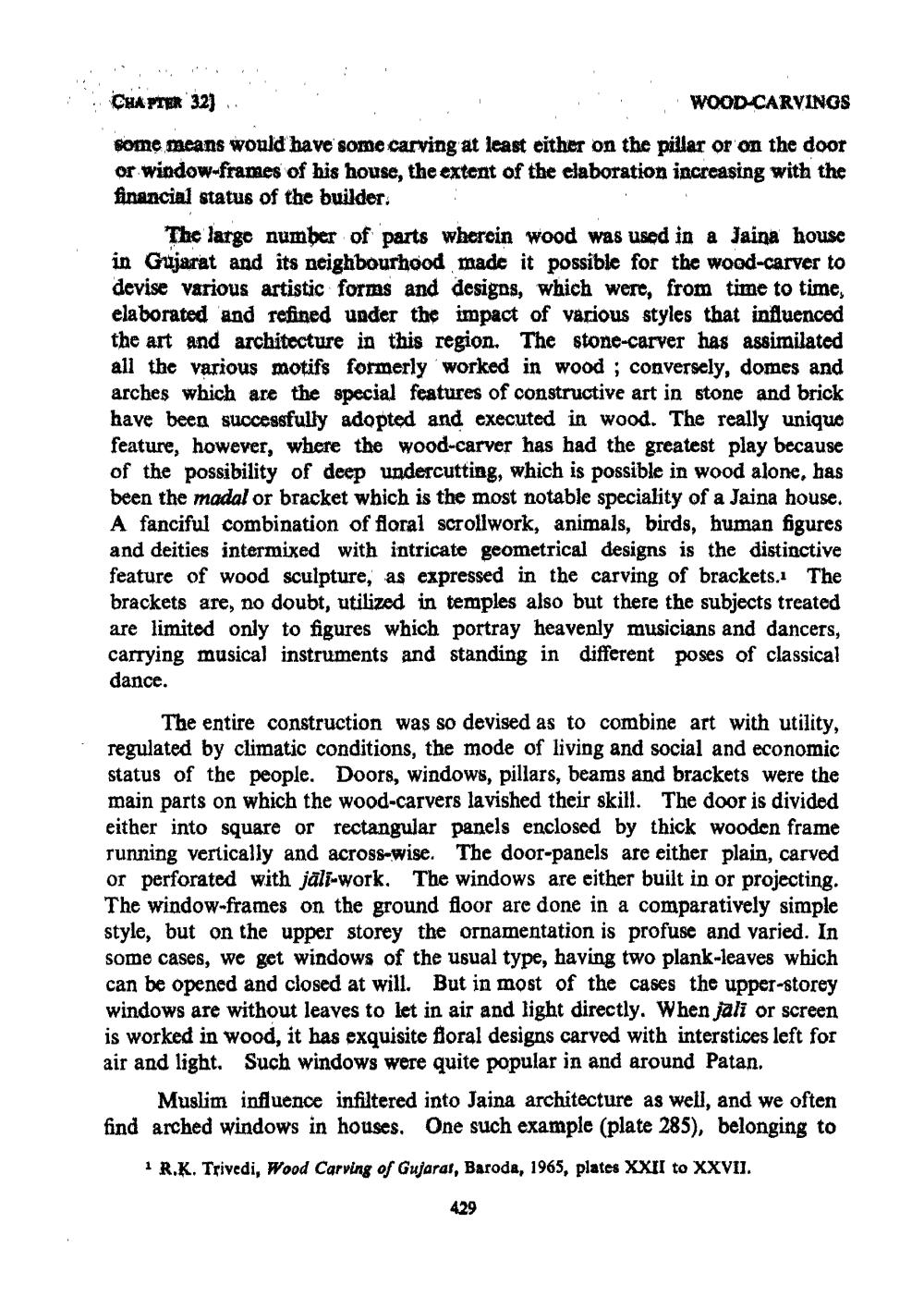________________
CHAPTER 32)
WOOD-CARVINGS
some means would have some carving at least either on the pillar or on the door or window frames of his house, the extent of the elaboration increasing with the financial status of the builder.
The large number of parts whercin wood was used in a Jaina house in Gujarat and its neighbourhood made it possible for the wood-carver to devise various artistic forms and designs, which were, from time to time elaborated and refined under the impact of various styles that influenced the art and architecture in this region. The stone-carver has assimilated all the various motifs formerly worked in wood ; conversely, domes and arches which are the special features of constructive art in stone and brick have been successfully adopted and executed in wood. The really unique feature, however, where the wood-carver has had the greatest play because of the possibility of deep undercutting, which is possible in wood alone, has been the madal or bracket which is the most notable speciality of a Jaina house. A fanciful combination of floral scrollwork, animals, birds, human figures and deities intermixed with intricate geometrical designs is the distinctive feature of wood sculpture, as expressed in the carving of brackets. The brackets are, no doubt, utilized in temples also but there the subjects treated are limited only to figures which portray heavenly musicians and dancers, carrying musical instruments and standing in different poses of classical dance.
The entire construction was so devised as to combine art with utility, regulated by climatic conditions, the mode of living and social and economic status of the people. Doors, windows, pillars, beans and brackets were the main parts on which the wood-carvers lavished their skill. The door is divided either into square or rectangular panels enclosed by thick wooden frame running vertically and across-wise. The door-panels are either plain, carved or perforated with jāli-work. The windows are either built in or projecting. The window-frames on the ground floor are done in a comparatively simple style, but on the upper storey the ornamentation is profuse and varied. In some cases, we get windows of the usual type, having two plank-leaves which can be opened and closed at will. But in most of the cases the upper-storey windows are without leaves to let in air and light directly. When jali or screen is worked in wood, it has exquisite floral designs carved with interstices left for air and light. Such windows were quite popular in and around Patan.
Muslim influence infiltered into Jaina architecture as well, and we often find arched windows in houses. One such example (plate 285), belonging to
1 R.K. Trivedi, Wood Carving of Gujarat, Baroda, 1965, plates XXII to XXVII.
429




